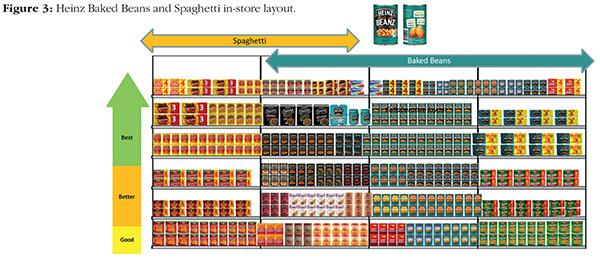Credited for really putting category and shopper on the map in Australia, Amanda is both a lead thinker and doer when it comes to shopper, category and retailer engagement. With more than 20 years’ experience in FMCG, there aren’t many problems she hasn’t seen before, yet she is widely acknowledged for bringing a fresh perspective, challenging opinions and having lots of enthusiasm for her clients’ issues and needs. Amanda was Retail World’s first category and shopper contributor and we’re delighted to welcome her back this year.
About Shopperpedia
It’s not about what people think they do, but what shoppers actually do in-store that counts and that’s why ShopperpediaTM is Australia’s largest, most robust source of in-store shopper behaviour insights.
We can do it better, faster and cheaper than anyone else so talk to us first on your very next project. If you would like to find out more, please contact us: info@shopperpedia.com.au
It’s hard to think of a single FMCG business in Australia today that isn’t under more pressure than ever to reduce spend and yet is expected to achieve even more in terms of shopper and consumer execution.
This series of articles is designed to show you how to get more ROI from your shopper team, insights and execution.
In this series of articles, the following will be covered:
- Picture of success: What does successful shopper execution look like, who’s doing it well and why?
- Getting started. Sometimes it can seem like everything needs doing at once. This article will help you prioritise the deliverables.
- Proper planning. Prevents poor performance, as has been drummed into us all. This article takes you through the three essential elements of any successful shopper execution plan.
- Execute, measure and learn. You’re unlikely to get it right first time. Learn how to measure the essentials and take things forward,
- Start again. Going to the next level in your shopper execution and ROI. In this first article we will cover the ‘picture of success’ for shopper execution. Specifically:
- What successful shopper execution looks like.
- Who’s doing it well.
- Why it worked.
What does successful shopper execution look like?
Something that increases impact with shoppers is a step in the right direction and insightful behavioural metrics such as dwell time, browsing typology and pick-up purchase ratios are really good ways of measuring shopper stopper power. However, the only thing that matters when it comes to shopper activation success is conversion, because greater shopper conversion equals more sales.
I often get asked what shopper conversion is (given it’s a bit of a new kid on the block as terminology), and the explanation people seem to understand the most is when I describe its relation to household penetration. In short, shopper conversion is to shoppers what household penetration is to consumers.
With household penetration we’re measuring the number of households that buy pasta sauce in a year over the total number of households.
With shopper conversion, we’re measuring the number of shoppers that buy pasta sauce today out of the total number of shoppers in the store today. What’s more, shopper conversion tells you just how ‘warm’ or ‘cold’ you are in converting shoppers every day by letting you know how many of the total store shoppers walked past pasta sauce, how many of them saw it, how many of them saw the gondola end with pasta sauce on it, whether they looked at it, browsed it, touched it and then ultimately bought from it or not. So the conversion funnel tells you who bought as a percentage, but, much more importantly, tells you how close or far away your category was in tempting that one extra shopper to buy.
In Figure 1, a successful shopper activation takes a conversion funnel from the example on the left to the example on the right.
So, in a nutshell, successful shopper activation equals higher conversion, more sales and better ROI.
Who’s doing it well?
Here are some examples from the Australian market. Arnott’s light lunch execution
Insight had shown that shoppers were coming into the store looking for a lunch solution, but the conversion funnel was falling over in two key places:
- Shoppers were avoiding the biscuit aisle as they didn’t see this as a lunch destination.
- Shoppers in the aisle were not choosing savoury biscuits and simply buying for their weekly shop.
The solution? An activation was devised around lunch with both in- and out-of-aisle in-store activation, linking up with tomatoes and avocados.
Heinz Baked Beans and Spaghetti in-store layout
Insight had shown how browsing rejection was very high at the baked beans and spaghetti shelf. Shoppers were struggling to find what they were looking for and confused about the layout.
The solution? Better segmentation between beans and pasta and stronger use of real brand beacons to flagpost segments.
Both baked beans and spaghetti achieved 15 per cent growth for the category and the retailer.
Why did it work?
In these and many other successful shopper activation projects, we have observed:
- Focus
- Knowledge
- Engagement plan
- Measurement and learning
- Further enhancement
The key thing to keep focused on is that maximum ROI for shopper activation is not elusive or magic. It is something that can be learned and taught by understanding and following the above steps. Once you make a start, you can be confident of getting significantly more from your in-store shopper activation in no time at all.
Good luck.




